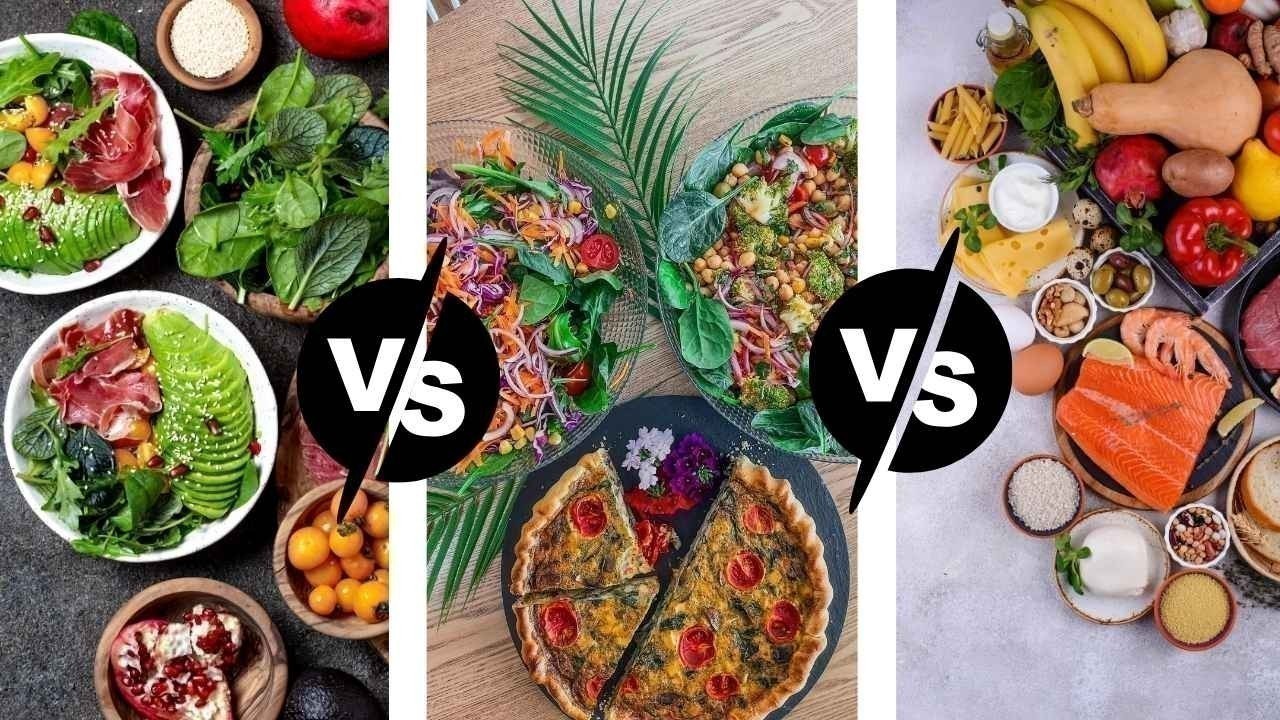
Post by : Anis Karim
Comfort food has long been associated with indulgence, nostalgia, warmth and flavour: think rich sauces, hearty textures, familiar spices, melting cheese. For many, the thought of comfort food conjures memories of childhood meals, rainy‑day dinners, or simple evenings at home with something delicious and reassuring on the plate.
But in 2025 a significant shift is underway. The plant‑based movement — once focused on reducing meat, dairy or animal products for health, ethics or environment — is now rewriting the rules of comfort. Vegan comfort food is no longer a niche or austere category. Instead, it is cozy, indulgent, familiar and increasingly mainstream. Dishes once reserved for meat‑and‑potato lovers are being reimagined with vegetables, legumes, fungi, and creative plant‑ingredients — and the results are resonating.
In this article we’ll explore what’s driving this shift toward plant‑based comfort, how it’s manifesting in menus and homes, the flavour and ingredient innovations leading the way, the implications for food & dining, and practical tips for cooks, diners and content creators alike.
In unsettled times, comfort food serves more than hunger — it serves emotional needs. As consumers look for stability and pleasure at home or in casual dining, they seek dishes that feel safe, unpretentious and satisfying. Plant‑based comfort foods deliver exactly that: the familiar structure of a hearty dish with a new ingredient logic.
One of the key signals is that plant‑based dining is broadening beyond the “healthy swap” category into the realm of pleasure, flavour and indulgence. Menu trend trackers highlight that vegan versions of burgers, mac & cheese, pizzas, desserts and casseroles are rising sharply, showing people want comfort but with a plant‑led twist.
For years, plant‑based eating was often associated with salads, raw bowls, minimal cooking or nutritional focus. That image is changing. The new wave emphasises texture, richness, complexity — mushrooms in a creamy sauce, cauliflower that bites like wings, dairy‑free cheeses that melt. The shift is emotional as well as nutritional: people want to feel they are indulging, not merely substituting.
Food‑industry research shows that plant‑based eating is evolving. Beyond just replicating meat, peptides and protein substitutes, chefs and brands are exploring root‑vegetables, legumes, fungi, seaweeds, and minimally processed whole‑foods. The comfort food reinterpretation is made possible by this ingredient innovation: better texture, better flavour, more authenticity.
Consumers are balancing multiple priorities: health, wellness, sustainability and enjoyment. Plant‑based comfort food hits a sweet spot: it allows for indulgence, but with lower animal‑product impact, lower saturated fat in many cases, and often higher fibres and plant‑nutrients. As a result, the category is growing not just among vegans, but among flexitarians and mainstream diners who want affordable, indulgent but conscious eating.
The rise of home cooking, shared comfort dinners, social‑media food culture and viral recipes has amplified this shift. Vegan comfort dishes feature well online — visually rich, experiential, shareable. For many consumers, cooking or ordering a plant‑based comfort dish becomes both a culinary treat and a social moment.
Let’s examine how this trend is playing out — in restaurants, at home and in the grocery aisle.
Old favourites are being reimagined with plant‑led ingredients:
Cauliflower Buffalo Wings: Crisped florets battered, tossed in spicy sauce, served with vegan ranch. They replicate the wing experience but remove the meat.
Mushroom Stroganoff with Cashew Cream: Earthy mushrooms replace beef, cashew cream replaces dairy — yielding a hearty, creamy one‑pot meal that satisfies deeply.
Vegan Mac & Cheese: Nutritional‑yeast, plant‑milk, root‑vegetable “cheese” are combined to recreate that gooey, comforting bowl many loved in childhood.
Plant‑Based Burgers & Sloppy Joes: Rich sauces, juiciness and indulgence remain; the base just shifts to peas, soy, lentils or fungi.
Comfort doesn’t stop at main courses. Vegan desserts are becoming increasingly indulgent:
Chocolate Avocado Mousse: Silkiness from avocado, richness from cocoa, sweetness from natural sweeteners.
Cashew‑based Ice Creams: Creamy, dairy‑free, decadent — made for self‑treats and social dinners.
Cheesecake & Custards: Plant‑milk, tofu, vegan cream cheeses are now delivering dessert experiences that rival traditional versions.
A major ingredient shift is happening: texture, mouth‑feel and richness now matter as much as nutrition. Mushrooms, jackfruit, chickpeas, beans, cashews, oats, sweet potatoes, root vegetables, legumes and pulses are featured prominently. Chefs talk about “un‑meating” the dish — building something that stands alone rather than simply mimicking meat.
Menu trend guides highlight that diners expect plant‑based comfort food to deliver enjoyment, not sacrifice. As one source summarises: “Classic comfort foods are getting a plant‑based makeover, often with healthier twists.”
While the dishes are comforting, they’re also drawing on global culinary roots: Asian stir‑fries with tofu or tempeh, Middle‑Eastern chickpea stews, Latin‑American bean‑based casseroles, Mediterranean veggie bakes. The result is comfort food that is both familiar and fresh.
What’s significant is how plant‑based comfort food is no longer restricted to upscale vegan cafés. Grocery shelves, fast‑casual kitchens, major restaurant chains and home cooks are adopting these dishes. Research shows plant‑based meat and dairy are seeing more affordable formats, private‑label options and expansion beyond niche stores. That accessibility helps the comfort category take root.
This shift toward plant‑based comfort food holds implications for restaurants, home kitchens, consumers, content creators and the food industry at large.
Menus must reflect the broader comfort‑dining needs of all customers — not just vegan regulars. A vegan burger, a creamy plant‑based casserole, a dessert that delivers richness — these can appeal to everyone.
Design matters: dishes should feel indulgent and familiar. Texture, presentation, richness and taste are crucial.
Ingredient sourcing: chefs need to move beyond processed substitutes and focus on good plant‑foods with excellent texture and flavour.
Marketing: highlighting comfort, indulgence and familiarity helps communicate the message that “vegan eats don’t mean sacrifice”.
Home cooks are seeking recipes that feel cozy not boring. Vegan comfort food fits well for weeknight dinners, family meals and social occasions.
Grocery shopping: consumers increasingly expect plant‑based comfort items to be easy to prepare, accessible and satisfying.
Wellness context: the comfort food shift shows that eating plant‑based is not only about restriction — it can be about enjoyment, richness and long‑term habits.
Flexitarian adoption: people who don’t identify as vegan but want plant‑forward diets will find comfort‑food formats a natural entry point.
Story angles: “How cauliflower wings became the star vegan dish in 2025”, “Why vegan macaroni & cheese is topping comfort‑food lists”, “The texture revolution in plant‑based cooking”.
SEO focus: readers search for comfort recipes, vegan favourites, plant‑based casseroles — tapping this trend helps engagement.
Format ideas: recipe features, restaurant round‑ups, home‑cook experiments, ingredient deep‑dives.
Engagement: content that emphasises nostalgia, familiarity and sensory descriptions resonates with comfort‑food audiences.
Product development: manufacturers should prioritise plant‑based comfort formats (burgers, casseroles, desserts) with great taste, texture, and reasonable price.
Retail strategy: mainstream shelves, not just vegan aisles, should highlight these comfort items. Attractive packaging, clear flavour messaging and convenience matter.
Sustainability + flavour: as plant‑based spreads, consumer will expect both environmental benefits and sensory satisfaction.
Price sensitivity: research shows affordability aids mainstream adoption. Private‑label plant‑based comfort offerings are growing.
While exciting, the shift toward plant‑based comfort food also carries caveats.
Some plant‑based comfort items may still be highly processed, with added oils, fats, sodium and flavourings. The “comfort” format must not inadvertently undermine health aspects. Food‑technology commentary advises focusing on better ingredients and less processing.
Premium plant‑based comfort foods can be expensive. For mainstream adoption, affordability and mass availability remain key. Retail trends show that price and private‑label options influence uptake.
For consumers accustomed to meat‑and‑dairy textures, plant‑based comfort foods must deliver on mouth‑feel and satisfaction. If the experience feels compromise, the dish fails the comfort test. Therefore, recipe development and product formulation are critical.
Some comfort formats fall into “meat mimicry” with poor nutritional or sensory outcomes. A potential alternative is celebrating plant‑forward dishes on their own merit, not merely as imitation. Food‑industry commentary signals a growth in “plant‑forward” rather than “plant‑imitating‑meat”.
Comfort foods vary widely by culture. Plant‑based comfort needs to respect regional flavours, spices and textures to succeed globally. What works in one market may need adaptation in another.
Here are practical steps for home cooks, diners and food writers to engage with this trend.
Start with one comfortable dish: Convert a familiar favourite you love — for example, mac & cheese, lasagne, wings — into a plant‑based version.
Focus on texture: Use cauliflower, mushrooms, beans, legumes or tofu to replicate chew, bite or creaminess.
Use rich sauces and flavour: Comfort food often relies on buttery sauces, creamy textures, deep flavours. Let plant‑based enjoy the same.
Embrace whole foods: Prioritise ingredients like sweet potato, lentils, chickpeas, nuts, seeds rather than heavily processed substitutes.
Balance indulgence and health: It’s okay for comfort dishes to feel rich, but consider portion size, use of healthy fats, fibre and vegetables.
Explore global comfort formats: Don’t limit to burgers or casseroles—try a Mediterranean bean stew, Indian curry with cashew cream, Thai coconut soup.
Share the experience: Plant‑based comfort is social—invite friends, make it part of the dinner table experience and not just a “health meal”.
Write or document your journey: If you’re creating content, capture the before (traditional dish) and after (plant‑based rework), highlight texture, flavour, visual appeal and emotional response.
Looking ahead, several developments are poised to shape how this trend evolves:
Ingredient innovation: More firms and chefs will explore fungi, algae, seaweeds, pulses and lesser‑used vegetables to deliver deeper flavour and satisfying texture — moving beyond soy and pea proteins.
Affordable mainstream formats: As private‑label plant‑based comfort formats proliferate, price gaps with conventional comfort food will narrow, supporting broader adoption.
Hybrid menus & inclusivity: Restaurants and food services will include plant‑based comfort dishes as defaults rather than “special” options — signalling normalisation.
Comfort in convenience formats: Frozen, ready‑meal, quick‑serve plant‑based comfort items will expand — consumers will expect the same indulgence with convenience.
Localized flavour profiles: Comfort food in India, Southeast Asia, the Middle East or Africa will see plant‑based reinterpretations of traditional dishes – imagine vegan biryani, jackfruit haleem, coconut‑cream kheer.
Content & media focus: Food media will spotlight plant‑based comfort as both indulgent and sustainable — melding nostalgia with modern values.
The survival of comfort food in plant‑based form is not just possible — it’s thriving. In 2025, the vegan comfort category is no longer about compromise. It’s about cozy indulgence, familiar flavours, sensory satisfaction, and aligned values. The vegetarian or vegan label is no longer the selling point—taste, texture and emotional satisfaction are.
For consumers, this shift means they can enjoy dishes that feel indulgent, feel like home, feel comforting — and still align with health, ethics or sustainability goals. For restaurants, brands and home cooks, it means designing dishes that meet the comfort criteria while being plant‑led. For writers and media, it means telling stories that celebrate indulgence, flavour and transformation—not only discipline.
Plant‑based comfort food shows that the future of eating may be green, but it doesn’t have to be austere. It can be warm, rich, satisfying—and deeply comforting. The new comfort food is plant‑based, and it’s ready to claim its place at the dinner table.
This article is for editorial and informational purposes only. It explores food trend insights and occasional recipe formats related to plant‑based comfort eating. It does not provide personalized nutritional advice. Readers should consult qualified professionals for dietary guidance.

Dubai Racing Carnival Opens at Meydan with Top Horses
Dubai Racing Carnival begins at Meydan with 73 horses in 7 races, featuring top local and internatio

UAE Warriors 65 Set for Al Ain, Features Women’s World Title Fight
UAE Warriors 65 returns to Al Ain on Nov 15, featuring 13 MMA bouts, including a women’s world title

Travel Influencer Anunay Sood Dies at 32; Peers Remember His Energy and Spirit
Travel influencer Anunay Sood dies unexpectedly at 32. Fellow creators and adventurers remember his

UAE Tops MENA in ESG Integration, Driving Sustainable Growth
UAE leads MENA in ESG adoption, with companies linking sustainability to business outcomes, employee

Chrysalis International Academy Ushers New Era in Dubai Schools
Nalapad Investments & MVK Holdings break ground on Chrysalis Academy in Dubailand, blending British

Warner Bros Discovery Q3 Revenue Misses Expectations
Warner Bros Discovery posts $9.05B Q3 revenue, falling short of estimates, driven by weak streaming

Soha Ali Khan Shares Fun & Rare Family Dinner Stories
Soha Ali Khan opens up about family dinners, her parents, and siblings, sharing rare anecdotes and i

The New Season Alert Maharani Season 4 Coming Soon
Maharani Season 4 arrives on SonyLIV with Huma Qureshi as Rani Bharti facing new rivals bold politic

Paramount+ to Stream PBR’s Top Bull Riding Series in 2025
Paramount+ secures 5-year rights for PBR's "Unleash the Beast," streaming live across 17 states from

Zohran Mamdani Victory Speech Goes Bollywood with Dhoom Machale
Zohran Mamdani wins NYC mayor race, becoming the city’s first Muslim and South Asian mayor, making h

UAE Life High Stress 3 Simple Ways Expats Can Manage Pressure
Expats in the UAE face daily pressure and burnout Learn 3 simple effective ways to manage stress fin

Smart Meal Prep in Dubai Save Money Stay Healthy
Plan smart eat fresh Discover how meal prepping in Dubai helps you save money eat healthy and enjoy

The Ultimate Guide to Dieting in Dubai Keto vs Vegan vs Mediterranean
Discover Dubai’s top diet trends Keto Vegan and Mediterranean Find which plan fits your lifestyle f

Stay Fit in Dubai 7 Fun Outdoor Workouts Without a Gym
Explore 7 fun ways to stay fit in Dubai from beach runs to desert hikes and skyline yoga No gym nee

Beyond Biryani: Mastering Portion Control in Dubai’s Melting Pot of Cuisines
Discover how to enjoy Dubai’s diverse cuisines wisely Learn simple portion control tips to stay heal